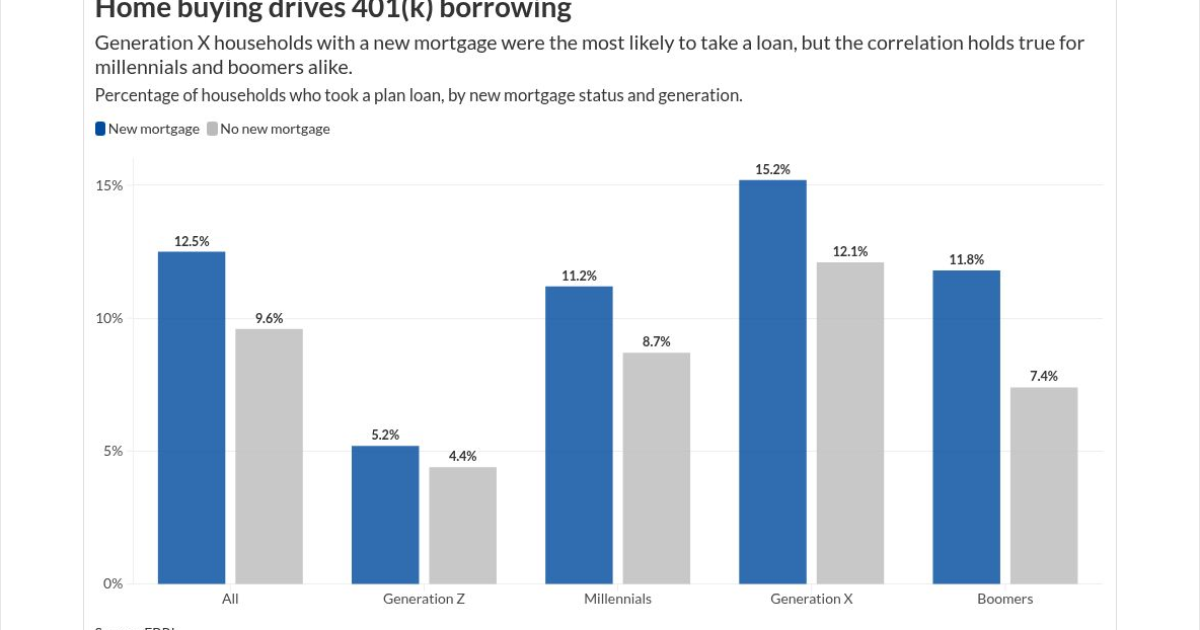Retirement used to mean slowing down, spending cautiously, and relying on fixed income. But new data from financial institutions and retirement surveys shows a major shift in how retirees are approaching savings—and it’s poised to influence the 2025 market. Older Americans are rethinking traditional strategies, embracing flexibility, and even taking on new financial risks. This evolving mindset is changing how money flows through the economy, and investors are taking notice.
More Retirees Are Staying Invested
One of the most surprising trends is that retirees are keeping more money in the market. Instead of shifting entirely to bonds or cash, many are maintaining diversified portfolios that include stocks, ETFs, and even real estate. With interest rates still relatively low and inflation high, seniors are seeking investments that offer growth to preserve their purchasing power. Financial advisors report that clients in their 70s and 80s are more comfortable with market volatility than previous generations. This shift is injecting new energy into sectors traditionally dominated by younger investors.
Emergency Funds Are Growing
Another key change: retirees are prioritizing liquidity. The pandemic and recent economic uncertainty have taught older adults the importance of having cash on hand. Many are building larger emergency funds—sometimes equal to a year’s worth of expenses. This trend is affecting savings account balances, money market fund inflows, and short-term investment strategies. It also reflects a growing desire for control and security in an unpredictable world.
Spending Is More Strategic
Retirees are also becoming more intentional about spending. Instead of cutting back across the board, they’re focusing on value—spending more on health, travel, and experiences, while trimming non-essential costs. Subscription services, luxury goods, and impulse purchases are being replaced by planned outings, wellness programs, and home upgrades. This shift is influencing consumer behavior and reshaping demand in key industries. Companies targeting seniors are adapting their offerings to match this new mindset.
Side Hustles and Part-Time Work Are Up
A growing number of retirees are supplementing their income with part-time work or side gigs. Whether it’s consulting, tutoring, or selling crafts online, older adults are staying active—and earning. This trend is driven by both financial need and personal fulfillment. It’s also changing how retirees manage savings, with some choosing to delay withdrawals or reinvest earnings. The result is a more dynamic and engaged senior workforce that’s influencing labor markets and retirement planning tools.
Technology Is Driving Financial Confidence
Digital tools are helping retirees feel more in control of their money. Budgeting apps, robo-advisors, and online banking platforms are making it easier to track spending, manage investments, and plan for the future. Seniors are increasingly tech-savvy, and financial institutions are responding with simplified interfaces and personalized support. This digital empowerment is leading to smarter decisions and more proactive savings strategies.
Rethinking the 4% Rule
The classic rule of thumb—withdraw 4% of your retirement savings annually—may be losing ground. New data suggests that retirees are adjusting withdrawal rates based on market conditions, health status, and lifestyle goals. Some are withdrawing less to preserve assets, while others are front-loading spending in early retirement. This flexible approach is reshaping how financial planners model retirement income and how retirees interact with their portfolios.
Impact on the 2025 Market
These shifts in retiree behavior are already influencing broader economic trends. Increased investment activity among seniors is boosting demand for financial products and services. Strategic spending is reshaping consumer markets, especially in healthcare, travel, and home improvement. And the rise of senior side hustles is adding complexity to labor and tax policy. As retirees become more active participants in the economy, their choices will play a larger role in shaping the 2025 market.
What Financial Advisors Are Saying
Experts are urging retirees to continue embracing flexibility—but with caution. Staying invested can offer growth, but it requires risk management and regular review. Building emergency funds is smart, but shouldn’t come at the expense of long-term returns. Strategic spending and side income can enhance retirement—but only if balanced with health and lifestyle needs. The key is personalization: no two retirements look the same, and savings strategies should reflect that.
Reshaping What Retirement Looks Like
Retirees are no longer passive savers—they’re active financial participants. From investing to spending to earning, older Americans are reshaping what retirement looks like. These changes are influencing markets, businesses, and policy—and they’re just getting started. Whether you’re retired or planning to be, understanding these trends can help you make smarter decisions. The future of retirement is flexible, empowered, and more financially engaged than ever.
Are you rethinking your retirement savings strategy? Share your approach or questions in the comments—we’d love to hear how you’re adapting.
You May Also Like…

Teri Monroe started her career in communications working for local government and nonprofits. Today, she is a freelance finance and lifestyle writer and small business owner. In her spare time, she loves golfing with her husband, taking her dog Milo on long walks, and playing pickleball with friends.





























